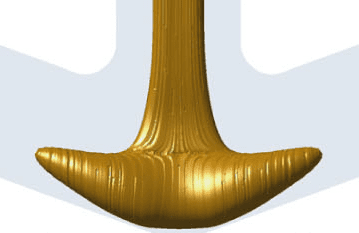
Computer simulations done by physicists in Switzerland and the US suggest that “invisible anchors” can trap particles as they move with a fluid through T-junctions. The regions in which particles are trapped can comprise large parts of a junction and the research could lead to the design of microfluidic systems that are designed specifically to trap and process particles of interest.
T-junctions and other connections between fluid-carrying pipes are ubiquitous in the built-up world – and can play important roles in industrial processes. While it seems reasonable to think that liquid flow will pull small particles through a junction, in reality particles are known to become trapped in large regions of a junction. This can lead to a wide range of problems such as clogged pipes. On the positive side, this trapping effect is being used to create microfluidic systems for processing particles.
Since 2014, Howard Stone of Princeton University and colleagues have been studying this effect by doing experiments in which hollow glass beads are carried by fluids of different viscosities through a variety of junctions. They found that these beads – which have lower density than the fluids – can become trapped in junctions under a wide range of experimental conditions.
Vortex breakdown
The team suspected that the trapping is caused by a phenomenon called “vortex breakdown”. This is an abrupt disruption of the smooth flow of a fluid, which can occur as the fluid accelerates around the sharp bend of a junction. This creates vortices and regions of zero flow where particles can be trapped.
Stone and colleagues identified this mechanism in their earlier work, but remained puzzled because their calculations suggested that the trapping regions were much smaller than seen in experiments. Now, Stone has teamed up with David Oettinger and George Haller of ETH Zurich and Jesse Ault of Oak Ridge National Laboratory to do much more detailed calculations that consider how individual particles interact with the fluid – and how this affects their motion within a T-junction.
The team’s computer simulations revealed much larger trapping regions that resemble a ship’s anchor. In some cases, 25% of the cross-section of the input pipe led to regions in which particles would become trapped.
Gaining a better understanding of the trapping process could lead to a wide range of applications including minimizing the build-up of bubbles within liquid distribution systems and processing materials in microfluidic devices. Describing their latest results in Physical Review Letters, Stone and colleagues highlight the microfluidic production of single-layer lipid vesicles as one important potential application.



